The JUICE spacecraft, which set off on a journey to Jupiter, will study closely three large moons of the giant planet: Europa, Ganymede, and Callisto. But the large moon Io, which is closest to the gas giant, will be observed from a distance. However, this does not mean that there is nothing to see on it.
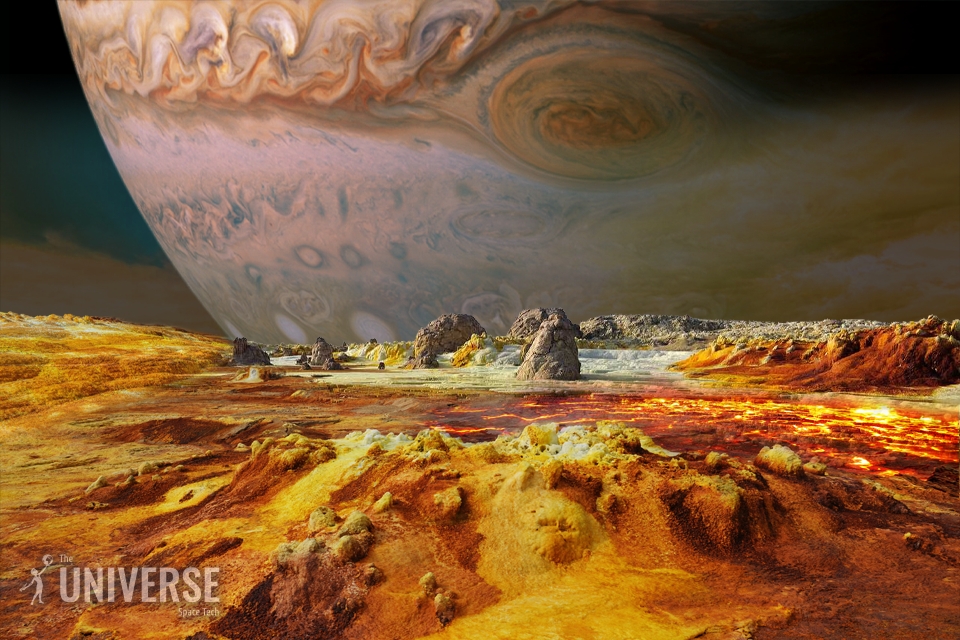
The Surface of Io
Why JUICE will look at Io from afar
The Jupiter Icy Moons Explorer (JUICE) spacecraft was launched from the Kourou Cosmodrome in French Guiana on April 14, 2023. It will spend the next few years traveling through the Solar System. And in the early 2030s, the probe will begin its main mission — to study the largest moons of Jupiter.
There are four of them in total: Io, Europa, Ganymede, and Callisto. We have previously talked about the last three. Now it’s time for the first one. JUICE will observe it from a distance, not because there is nothing interesting there. The matter is that Io rotates very close to the planet and moves inside its radiation belts. The concentration of charged particles in this region of space is so high that they can easily damage not only a person who would find themselves there but also any electronic equipment.
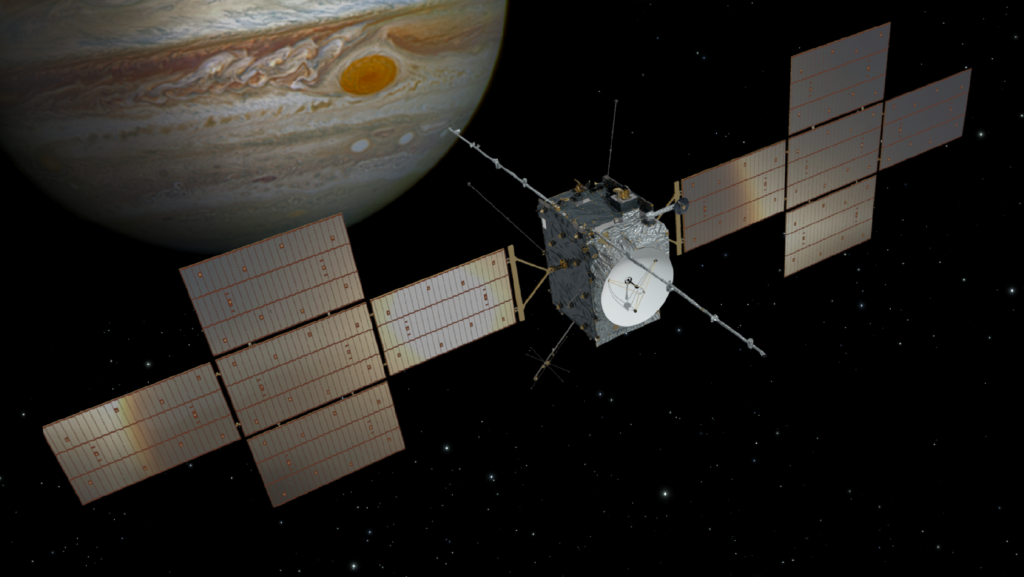
Of course, engineers could have added additional protection to JUICE to allow it to get closer to Io. But due to the mass and size limitations, this could only be done by removing some scientific equipment from the spacecraft. It’s a shame, as there really is a lot to see on this moon.
The Tidal Effect of Jupiter
Io has a diameter of 3642 km — slightly larger than the Moon. And it is the fourth-largest moon of the planet after Ganymede, Titan, and Callisto. At the same time, it has an average density of 3.53 g/cm³, making it the densest moon in the Solar System.
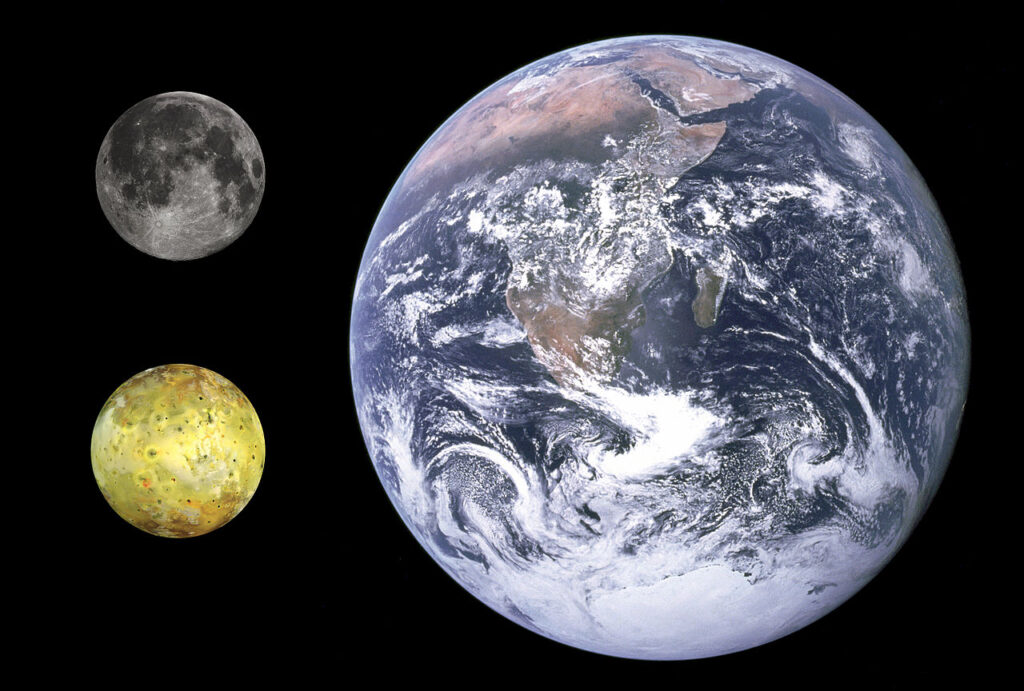
The main feature of Io that determines its appearance is its orbit. This moon is not the closest to the gas giant of all the bodies that revolve around it, but still, at its closest point (periapsis), the distance from it to the upper layers of the gas giant’s clouds is 350,000 km. This is slightly less than the minimum possible distance between the Earth and the Moon.
The difference is that since Jupiter is 318 times heavier than Earth, the tides it creates are much stronger. In addition, Io’s orbit has a significant eccentricity, so their effect incessantly increases then decreases over the 42 hours, taken by this moon to complete one full orbit around the giant planet.
All this leads to the fact that tidal forces try to stretch Io, giving it an egg-like shape, while its own gravity resists this. Consequently, not only internal heating of the core occurs there, but also surface cracking.
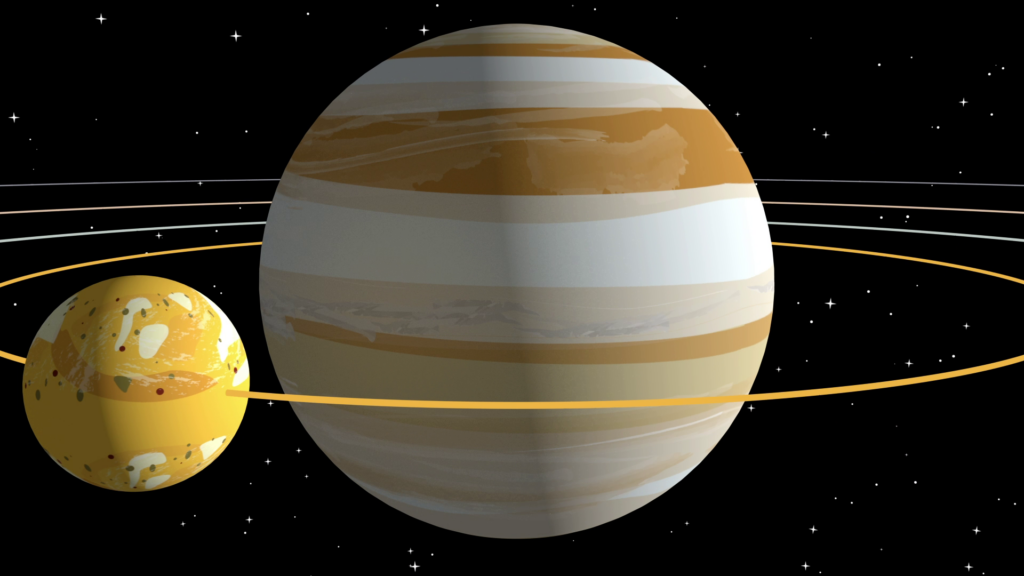
A volcanic World
As a result of this, Io differs significantly from the rest of the moons of the giant planets and has much more in common with rocky planets of the Earth group. While Europa, Ganymede, and Callisto are largely composed of water ice, the largest satellite closest to Jupiter hardly contains any. Perhaps it once had large reserves of ice, but it evaporated long ago and flew off into space.
Io is currently actively losing its mass. It is precisely the particles that have “escaped” from its surface (as well as from Europa’s surface) that make up the majority of Jupiter’s ghostly ring, which is located near the planet’s atmospheric boundary.
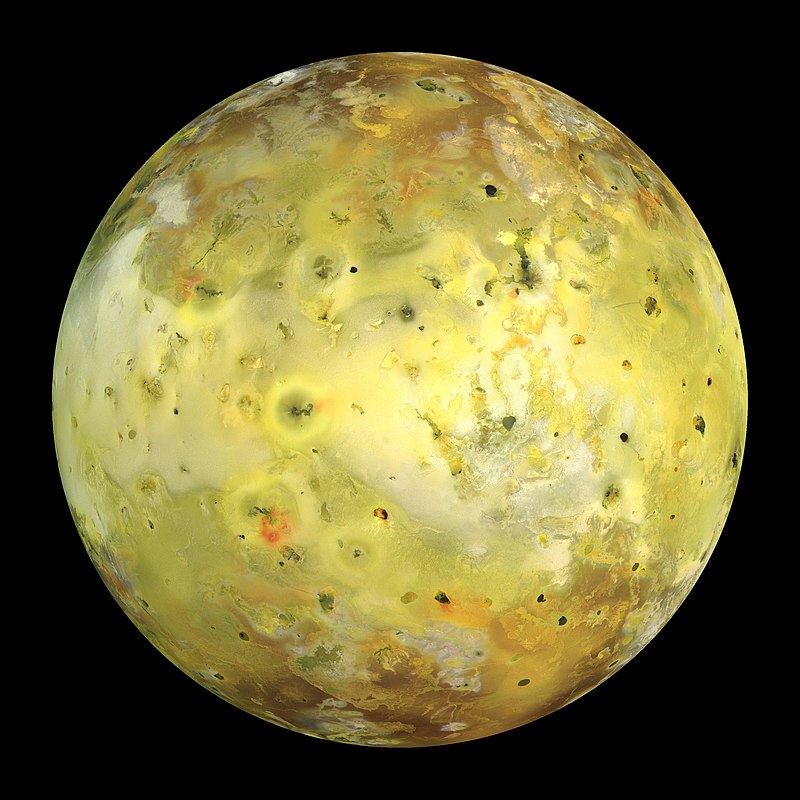
The internal structure of Io is also unique among Jupiter’s moons. There are no hidden oceans beneath its surface. Instead, Io has a very large core of molten iron, surrounded by a mantle of silicates. Another peculiarity of this world is the large amount of sulfur in its rocks. The internal heat melts the sulfur, and it erupts to the surface, forming volcanoes. Because of this feature, Io is known as the most volcanically active moon in the solar system.
Io’s topography
The volcanoes and other details on Io’s surface will be the subject of investigation by the JUICE spacecraft. Its complete map was created in 2012, but volcanic eruptions are of particular interest to scientists. The gravity on this moon is only 18% of Earth’s, so during eruptions, gas and solid particles rise very high and reach space, spreading in all directions.
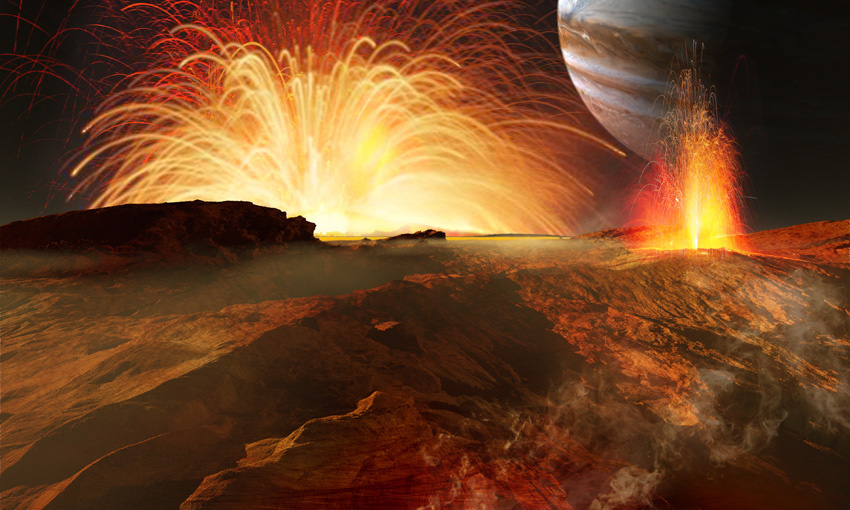
Io’s surface is unlike either the cratered landscape of Callisto or the icy shell of Europa. Its main feature is the sulfur-covered plains, which have a dirty-yellow color. Plateaus and table mountains rise above them. The latter are often cut by deep canyons, along which streams of molten sulfur flow. In addition, there are many mountains of non-volcanic origin on the moon’s surface. They form when the crust cracks and parts of it move against each other, partially overlapping.
South Boösaule and Danube Planum
One of the highest mountains in the solar system is also located on Io — South Boösaule. It is part of the Boösaule mountain range and is a sharp peak formed by a heavily tilted section of the planet’s crust. Its height is 18.5 km, which is twice the height of Earth’s Mount Everest. The southeastern slope of the mountain is one of the largest cliffs in the solar system, rising 15 km above the surrounding terrain.
The giant Danube Planum, divided into two parts by deep canyons, looks no less magnificent. This gigantic mesa surpasses any of its “relatives” on Earth in scale. Its average diameter is 244 km, which is approximately equal in area to the Volyn and Rivne regions of Ukraine combined.
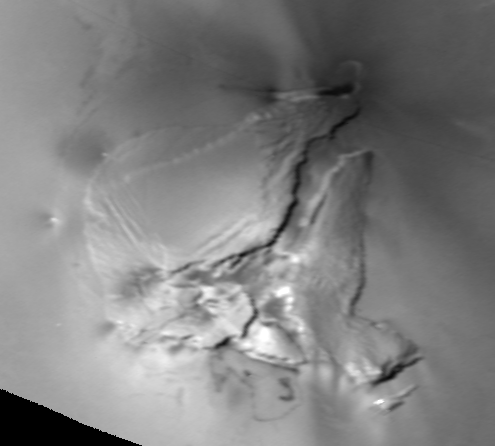
The height of the Danube planum is 5.5 km, which is higher than Mont Blanc — the highest peak in Western Europe. At the same time, the slopes of this giant mesa are also cliffs up to 2.6 to 3.4 km high.
The Biggest Volcanoes in the Solar System
But Io’s main attraction is undoubtedly its volcanoes. Smaller ones in size are very similar to Earth’s, but there are also real giants here, being giant depressions in the surface rather than mountains. They are called paterae.
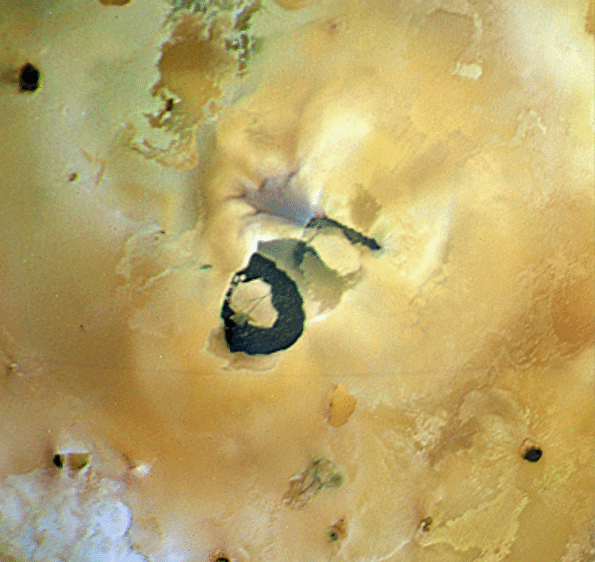
When people say that the Martian Olympus is the largest volcano in the solar system, they refer to its height. But if we measure the size of the crater, the undisputed leader will be the Loki Patera on Io, whose average diameter is 250 km. Any region of Ukraine could fit inside it.
Not all of Loki patera’s floor is molten magma. There are whole volcanic lakes inside it, the surface area of which is constantly changing. The reason for this is the crust of frozen rock, which sometimes covers the surface of the lava sea, and sometimes melts or sinks into it. But the most notable feature of Io’s surface is the Pele patera, located near the Danube planum. It is named after the Polynesian goddess of volcanoes. Its size is significantly smaller — “mere” 20 × 30 km. However, it is the most active volcano in the solar system.
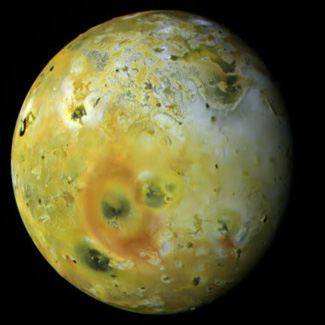
A 300 km high fountain of molten rock has been observed over the Pele Patera since 1979, when it was first seen by the Voyager 1 spacecraft. A significant part of this material falls back onto Io’s surface, forming a giant ring of reddish material around the volcano. It has a diameter of 1200 km and is the most prominent feature on the surface of this satellite.

